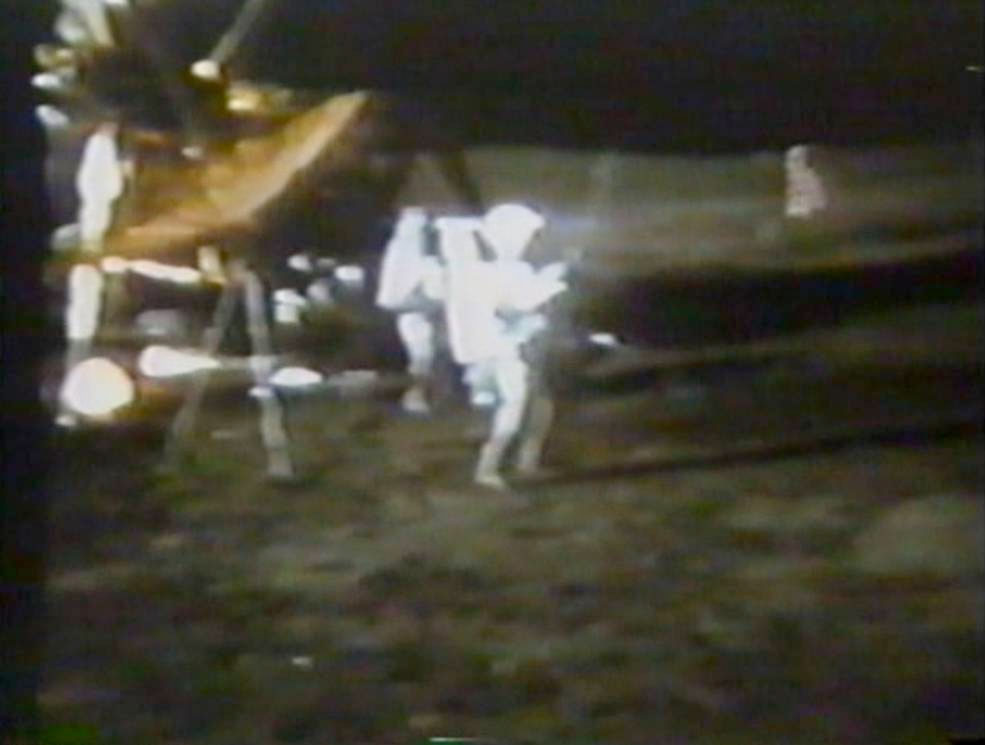Carlos Villagomez owns a golf ball that he believes was flown to the moon. If indeed it was, he may also hold the answer to a more than 50-year-old bit of trivia that otherwise may be forever lost to time.
Villagomez was gifted the ball by Alan Shepard, the first American astronaut to fly into space, fifth human to walk on the moon and the world’s first (and to date, only) lunar golfer. Wrapping up his second of two moonwalks on NASA’s 1971 Apollo 14 mission, Shepard took a swing at a couple of golf balls.
“I have a little white pellet that’s familiar to millions of Americans. I’ll drop it down. Unfortunately, the suit is so stiff, I can’t do this with two hands, but I’m going to try a little sand-trap shot here,” said Shepard 54 years ago today (Feb. 6).
Shepard had NASA’s permission to carry out the “moon shot” so long as it met the agency’s criteria, including that it be a non-commercial activity. To avoid any company from trying to profit from his one-sixth gravity drives, Shepard kept one key detail secret: the brand of the balls.
“I’ve never told anybody. I’ve never told my wife,” Shepard once said, as quoted by Sports Illustrated.
Related: Alan Shepard: 1st American in space
Maybe Maxfli?
What Shepard did do was gift Villagomez — his friend and barber — a signed golf ball just after exiting quarantine following his return to Earth.
“He shook my hand and I felt something there, and he gave me a ball,” Villagomez said in “The Barber, the Astronaut, and the Golf Ball” by filmmaker Jonathan Richards, based on the book of the same title by authors Barbara Radnofsky and Ed Supkis. “I wasn’t going to say, ‘Was this on the moon’s surface?’ I didn’t want to put him on the spot like that.”
“I figured I would ask him later, [but] I never asked him,” said Villagomez.
Whether or not Shepard took a third ball to the moon and then gifted it to his barber without any provenance is the focus of the book and the film. But if he did, and assuming all three balls were of the same make, then Shepard flew Maxfli balls, a brand established in 1910 by the sports division of the Dunlop Tire and Rubber Corporation, currently owned by Dick’s Sporting Goods.
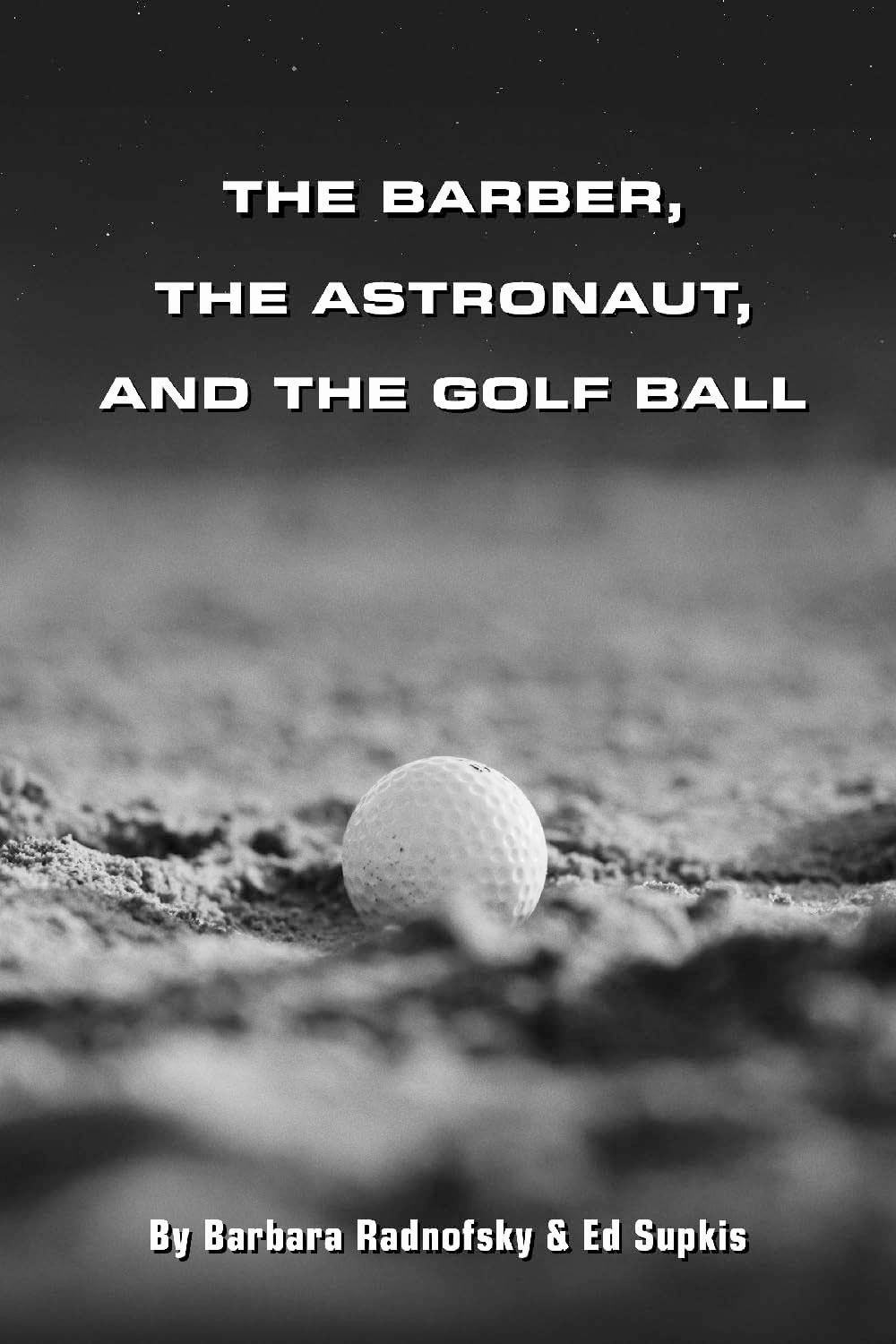
Why Maxfli? Well, perhaps it was due to Shepard’s sense of humor, suggests Radnofsky. Maxfli might have appealed to him given his hope that the balls would go for “miles and miles and miles,” as he proclaimed on the moon. (In reality, his “maximum flight” was only about 40 yards [36.5 meters], as later measured using photos of the balls on the lunar surface.)
But then again, Villagomez’s gift is not the only claim on a brand of ball.
Commemorative Moonball
Jack Harden, a Houston-local golf pro, helped Shepard create the makeshift club that was used on the moon by sawing off the head of a Wilson Staff Dyna-Power 6-iron and modifying it so that it could attach to the handle of a lunar sample collection device that was already on board the Apollo 14 lunar module. (Shepard donated the flown club to the United States Golf Association in 1974, and today it is on display in the USGA Golf Museum in Liberty Corner, New Jersey.)
Harden also reportedly gave Shepard a couple of two-piece Spalding-brand range balls that were customized with Harden’s name (“Property of Jack Harden”), which then became the balls that the astronaut flew to and hit off the moon — at least according to Harden’s son in an interview published in Sports Illustrated after Harden, Sr. died (the article, “Shooting for the Moon” by Jaime Diaz, was timed to Shepard’s death in 1998).
Whether Spalding knew of Harden’s gift or was taking advantage of the moment, the company offered a free “Commemorative Moonball” to customers who bought a dozen of its “Dot” balls. An ad said that the promo was “to celebrate Spalding’s space flight as first golf ball on the moon” and that the Moonball was “an exclusive edition of the two-piece Spalding golf ball that landed on the moon.”
Related: The moon: Everything you need to know about Earth’s companion
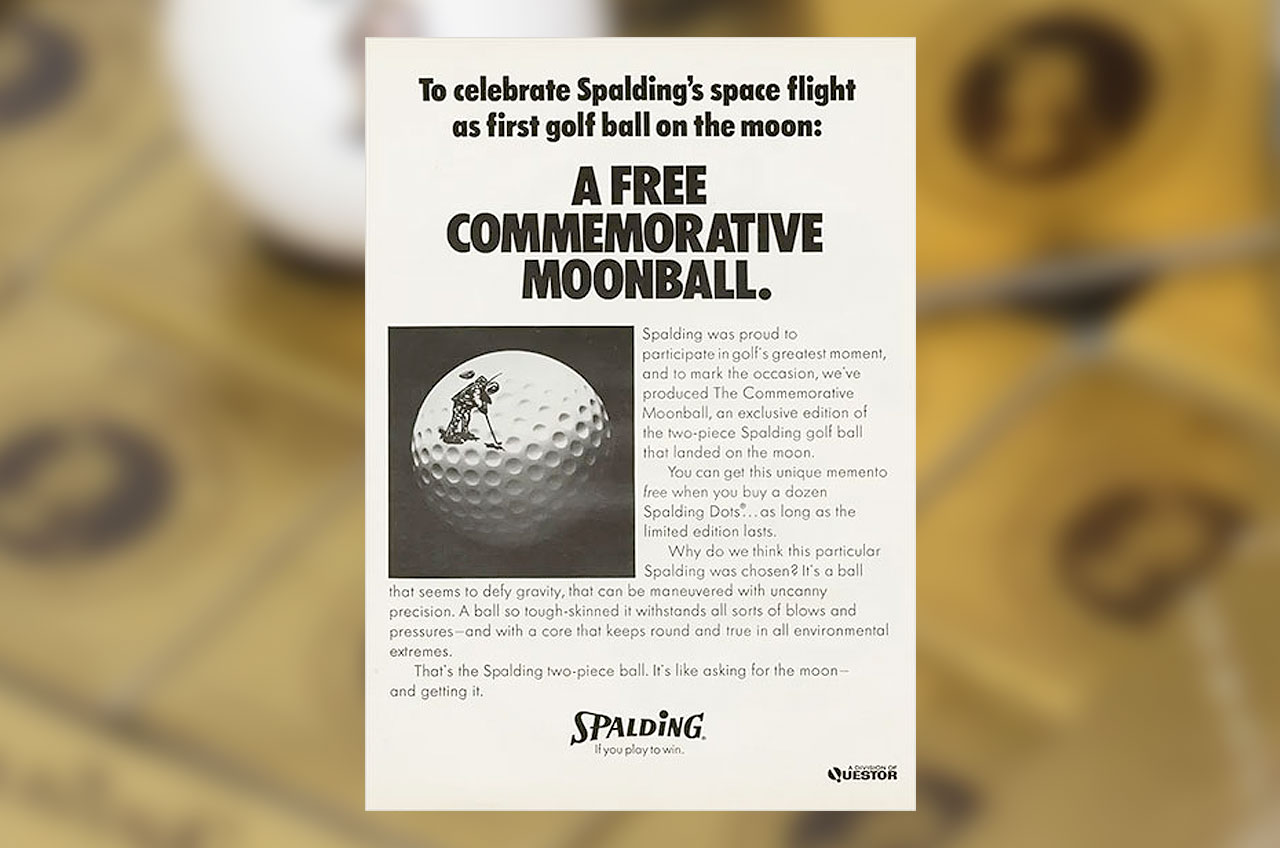
Each of the so-called Moonballs was adorned with an illustration of an astronaut (presumably Shepard) playing golf on the moon and was also inscribed, “First Golf Ball On The Moon, Feb. 6, 1971.”
Shepard was not amused. “We cut them off quickly,” he said in a NASA interview soon before his death.
…give me your answer true
One possible issue with Harden’s story impacts another separate claim, too.
In 2015, the Rogers Daisy Airgun Museum in Arkansas debuted an exhibit devoted to Shepard and his moon shot. Central to the display is a matted photo of the Apollo 14 crew that has been inscribed in part, “Our sincere thanks for the Daisy golf balls by Victor … They are out of this world.”
Although the Daisy Company is best known for its BB guns (hence the “airgun” museum), it did sell Daisy-branded golf balls when it was owned by the Victor Comptometer Corporation. The museum says it was Daisy balls that flew to the moon, based on the inscribed matte and the friendship that was shared between the company’s senior public relations executive and NASA’s director of public affairs in Houston at the time. The latter is said to have sourced the golf balls for Shepard to fly.
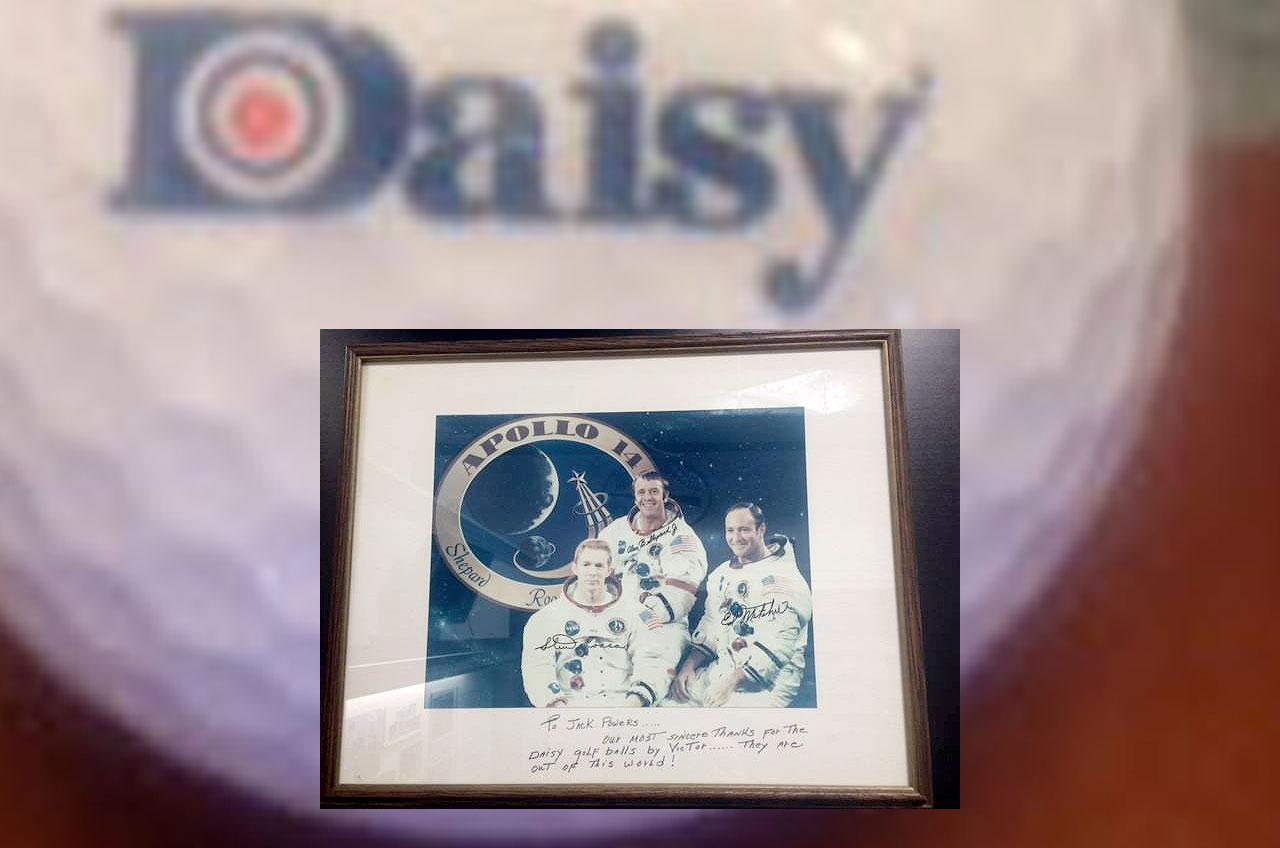
Both men have also since died, leaving only anecdotes, and then there is what Shepard, himself, said about the balls. “There were two golf balls, for which I paid — there was no expense to the taxpayer.”
If Shepard bought the balls himself, that would seem to rule out their being gifted or acquired by others.
Back to the moon
Whether the balls were Maxfli, Spalding, Daisy or some other company’s may only ever be answered if we can get eyes on the balls on the moon.
While the U.S., China, and other countries have plans to return astronauts to the lunar surface within this decade or the next, none are known to be targeting the Apollo 14 landing site, the Fra Mauro highlands, or areas nearby. Most of the renewed focus is on the lunar south pole, where water ice in permanently shadowed craters could become a resource for sustaining a base and producing rocket fuel.
Further, there are growing efforts to protect the human heritage sites on the moon from being disturbed. In 2021, the U.S. passed a law requiring domestic companies looking to send new missions to the moon to avoid the hardware and equipment left there by the Apollo missions. Likewise, NASA’s Artemis Accords calls for its more than 50 (and still growing) party nations to protect historic human and robotic landing sites as one of its 10 principles.
Most recently, the moon was added to the World Monuments Watch, a list of locations spanning five continents — and now the lunar surface — that should be preserved for the history they represent.
Blind shot
Even if you could find a safe, non-intrusive way to get close enough to read the brand marks on Shepard’s two golf balls on the moon, there may be nothing to see.
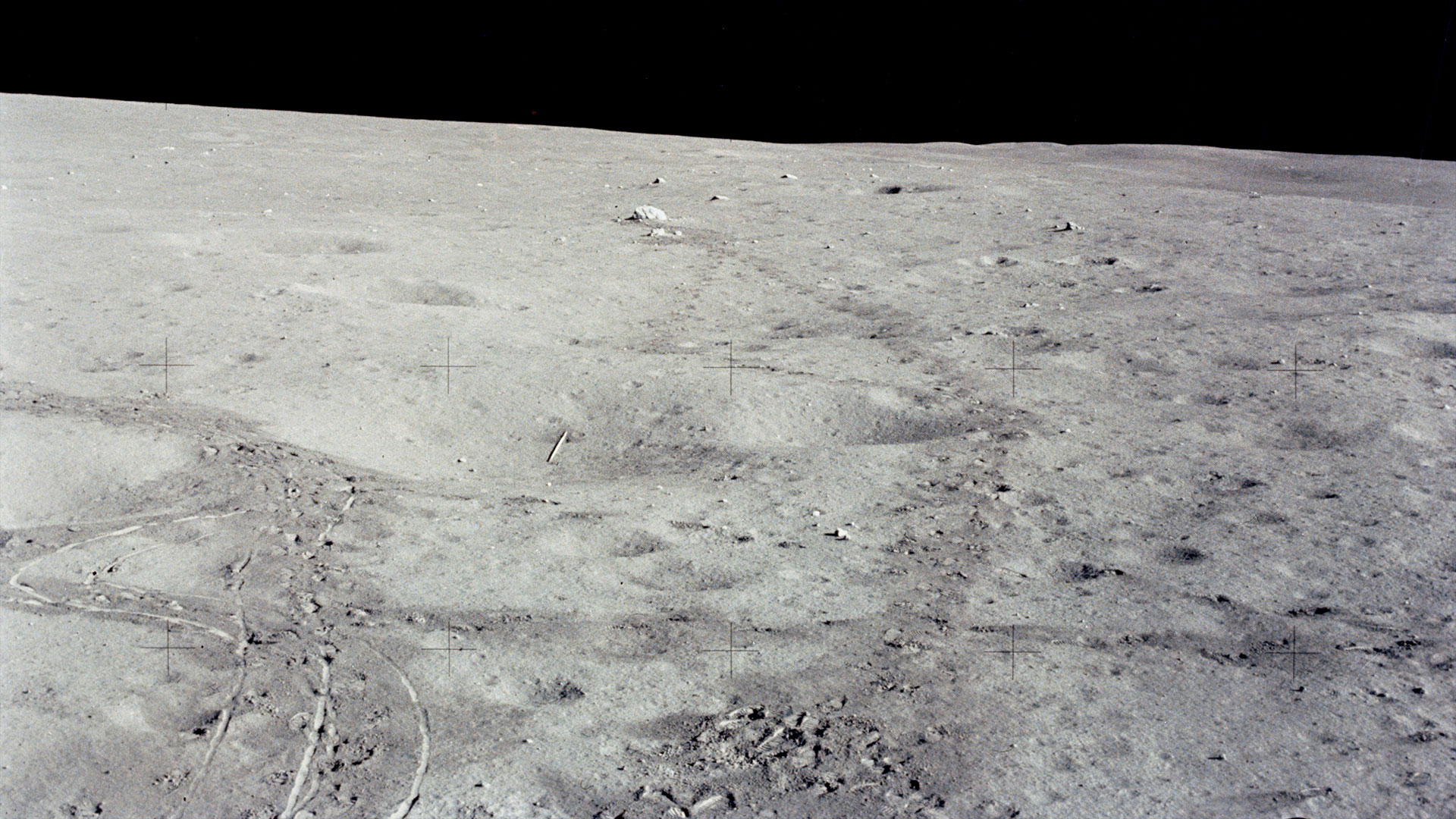
The two “little white pellets” were dropped into an environment that swings from 250 degrees Fahrenheit (121 degrees Celsius) in the daylight to minus 208 degrees Fahrenheit (minus 133 degrees Celsius) in the dark, and that is to say nothing about the exposure to radiation from the sun and cosmic rays.
“In time, the cover would turn brown and, with the cold of the lunar night, probably crack and fall off,” said one manufacturer after testing golf balls in lunar conditions, according to Sports Illustrated. “[The ball’s cores would] get hard and brittle” [and] “then they’d probably sit there forever in the vacuum.”
Shepard acknowledged that the balls had probably “exploded by now,” but despite that, desired a happier outcome.
“Perhaps the youngsters of today will go up and play golf with them,” he said.
Click through to collectSPACE to watch the documentary “The Barber, the Astronaut, the Golf Ball.”
Follow collectSPACE.com on Facebook and on X at @collectSPACE. Copyright 2025 collectSPACE.com. All rights reserved.
Read our previous article: UFC 312: Tatiana Suarez gets the chance to erase the ‘what if’ stigma after years of battling injuries
Sports Update: . Stay tuned for more updates on What brand of golf ball did Alan Shepard hit off the moon? The world may never know and other trending sports news!
Your Thoughts Matter! What’s your opinion on What brand of golf ball did Alan Shepard hit off the moon? The world may never know? Share your thoughts in the comments below and join the discussion!
